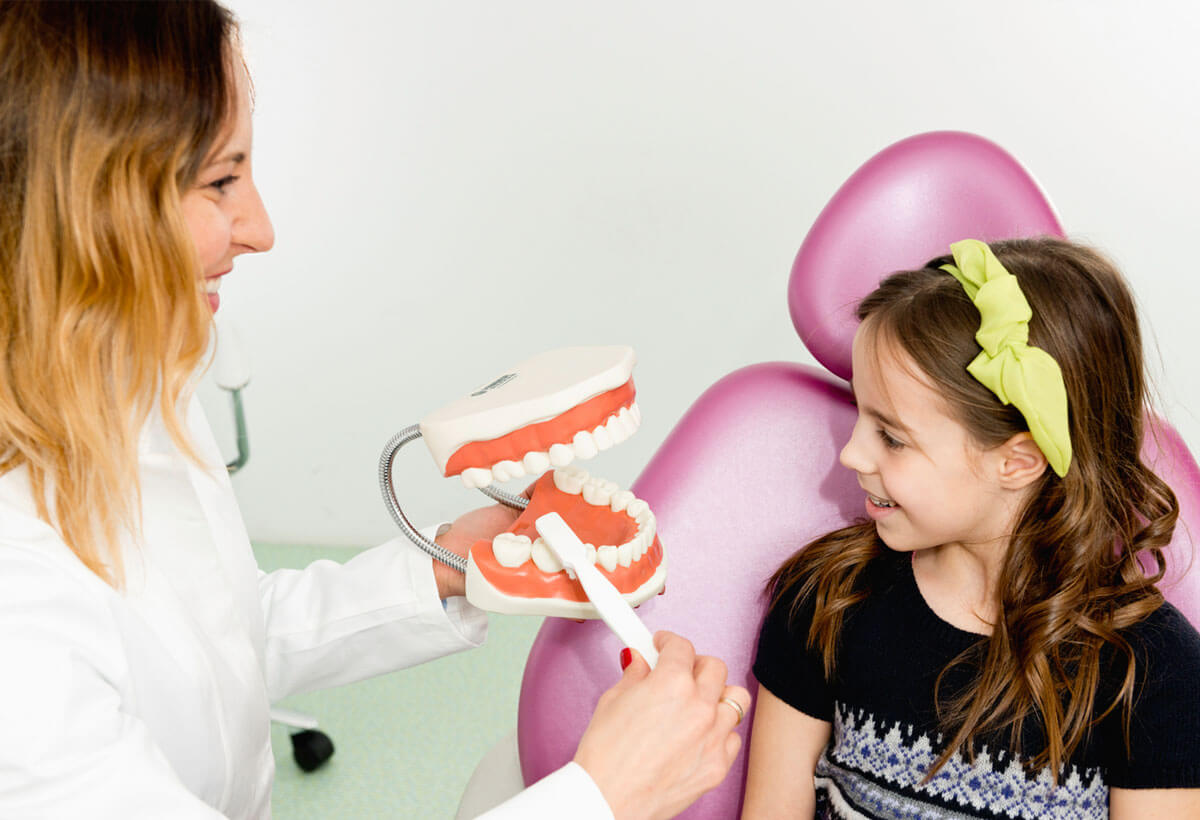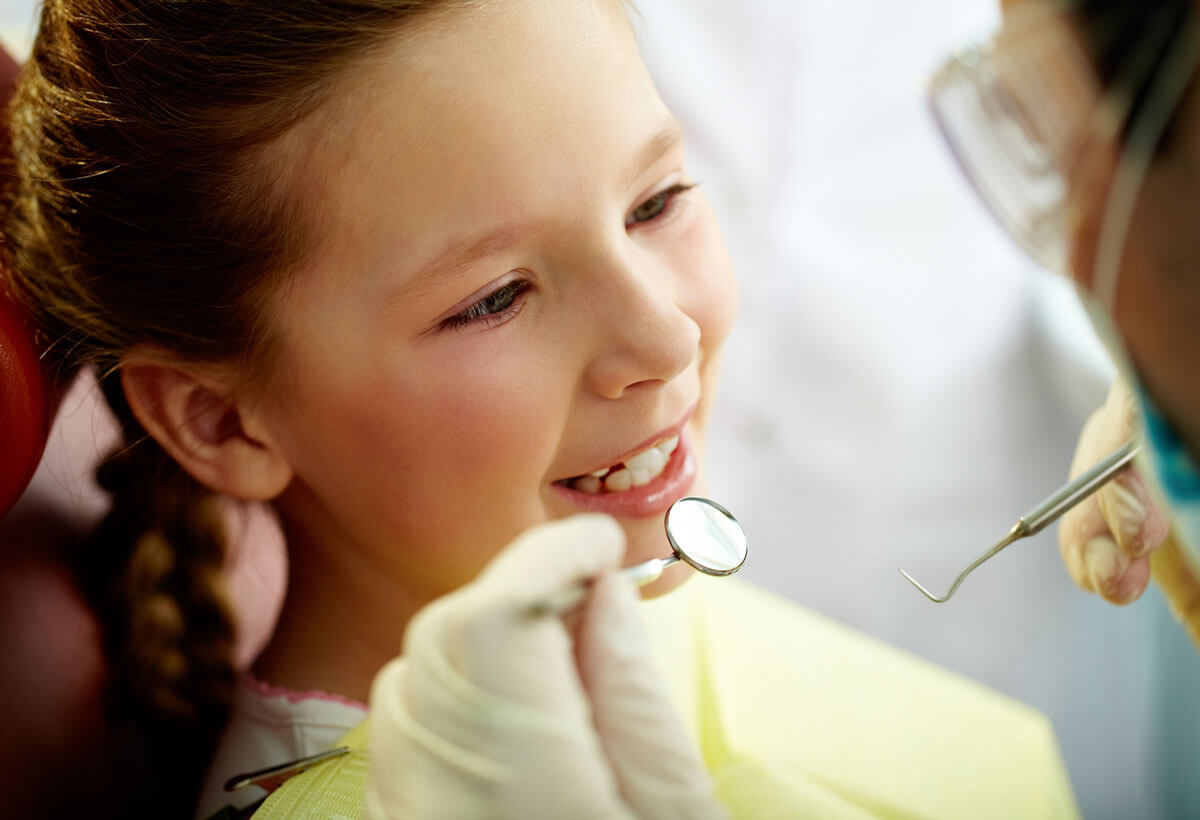Pedodontic Services
Preventive and Diagnostic

An oral evaluation is recommended every six (6) months to prevent cavities and other dental problems. During an oral evaluation, a thorough examination of the mouth, head, and neck is performed to detect abnormalities.
Regular cleanings help keep gums healthy and teeth cavity-free. A dental cleaning includes removal of tartar and plaque and polishing of the teeth to remove stains and prevent further buildup of plaque.
Fluoride is a natural substance that helps strengthen teeth and prevent decay. Fluoride treatments are administered at this office as an important component of pediatric dental treatment. The fluoride is applied to the teeth in a gel, foam, or varnish form.
Dental X-rays are a valuable diagnostic tool used to identify decay, extra teeth, bone defects, tumors, cysts and check the progress of previous procedures. Advances in technology now allow for digital X-rays, which reduce radiation exposure more than 50 percent, and produce instant, high-quality images that can be viewed immediately by the dentist and the patient.
During a regular check-up, oral hygiene instructions are given to both patient and parent. Good home care can reduce the risk of plaque and tartar build-up which can lead to cavities. Instructions include proper techniques for brushing, flossing, and using mouth rinses.
Dental sealants are made of a safe resin material which is applied to the surfaces of teeth (commonly permanent molars) to prevent cavities. The sealant material fills in the crevices of a tooth and “seals” off the tooth from cavity-causing agents like food and plaque. The teeth are prepared for the sealant application and the sealant is painted directly onto the chewing surface of each tooth and then hardens. Sealants are applied in one visit.
Restorative

Tooth-colored fillings are the most lifelike material used to fill cavities. Composite fillings can be done in one visit. Once the decay is removed, the tooth is filled with this composite material that hardens immediately after placement.
At Riverfront Pediatric Dentistry, we use the latest filling technology called Activa, a BPA free bioactive filling material that is strong and more durable than other filling materials.
Root canals involve treating decay that is inside of the tooth. If the inside of the tooth, known as the dental pulp, is damaged it will gradually decay if left within the tooth. The pulpotomy involves removing the pulp, cleaning out the root canals, and packing the canals with material that will help restore the tooth until it is time for it to exfoliate (or fall out on its own naturally).
Crowns are used to restore damaged or decayed teeth in children. Crowns completely cover the remaining tooth structure after it has been treated. They can be made of many different materials, including stainless steel, composite materials, polycarbonate, resin, porcelain, and zirconia. We offer several different options, allowing us to choose what is best for each child and each tooth.
A tooth that can not be saved with restorative materials may need to be removed. Before removing the tooth, the area will be numbed with local anesthesia. The tooth is then loosened using a special dental instrument known as an elevator. After the tooth is loosened from the socket, it is removed.
Interceptive Orthodontics

A habit appliance is useful to help stop a thumb or finger habit and/or to help re-train an improper tongue position or swallowing pattern. It is sometimes necessary to place an appliance to minimize the harm and distortion the habits or tongue posture can have on teeth. Most habit appliances are banded for adhesion to the back molars and are not removable.
Space maintainers are used to keep teeth from drifting into an empty tooth space due to early loss of primary (baby) teeth. Baby teeth act as a guide for the eruption of the permanent teeth. A space maintainer is made of stainless steel and/or plastic. It can be removable or fixed to the teeth.
Aesthetic

Cosmetic bonding is the process of filling or restoring teeth with a tooth-colored material in order to maintain a natural appearance.
Whitening, also known as bleaching, is the procedure used to brighten teeth. In-office whitening usually requires only one office visit. A protective gel or a rubber shield is placed over the gums to protect the soft tissue. A bleaching agent containing carbamide peroxide is applied to the teeth, and a laser light is then used to enhance the action of the whitening agent.
Additional Services

Children with special needs often require specific techniques and skills to help them feel comfortable receiving dental care. Our office is experienced in treating children with special needs and we are dedicated to helping these children maintain oral health, knowing that oral health is an important factor in overall systemic health.
Nitrous oxide, sometimes referred to as “laughing gas,” is an effective and safe sedation agent that is inhaled through a mask that fits over your child’s nose. In our office, we refer to nitrous oxide as “Happy Air” because it creates a feeling of calm and happiness, working to reduce your child’s anxiety during their dental treatment. Mixed with oxygen and delivered with child friendly scents such as strawberry, grape and bubble gum, nitrous oxide allows your child to breathe normally through their nose, and within minutes they should start to feel the effects. They may feel light-headed or notice a tingling in their arms and legs. Some patients comment that their legs and arms feel heavy. Ultimately, they should feel comfortable and calm. The effects of nitrous oxide wear off quickly after the mask is removed. Talk to Dr. Simchi about whether Happy Air would be a good option for your child.
